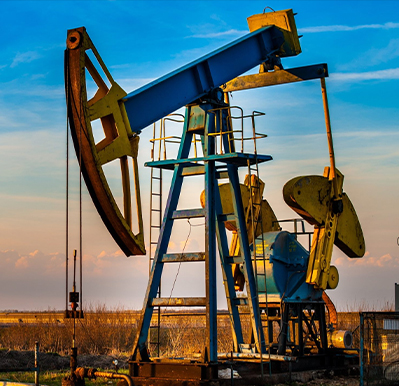- Afrikaans
- Albanian
- Amharic
- Arabic
- Armenian
- Azerbaijani
- Basque
- Belarusian
- Bengali
- Bosnian
- Bulgarian
- Catalan
- Cebuano
- Corsican
- Croatian
- Czech
- Danish
- Dutch
- English
- Esperanto
- Estonian
- Finnish
- French
- Frisian
- Galician
- Georgian
- German
- Greek
- Gujarati
- Haitian Creole
- hausa
- hawaiian
- Hebrew
- Hindi
- Miao
- Hungarian
- Icelandic
- igbo
- Indonesian
- irish
- Italian
- Japanese
- Javanese
- Kannada
- kazakh
- Khmer
- Rwandese
- Korean
- Kurdish
- Kyrgyz
- Lao
- Latin
- Latvian
- Lithuanian
- Luxembourgish
- Macedonian
- Malgashi
- Malay
- Malayalam
- Maltese
- Maori
- Marathi
- Mongolian
- Myanmar
- Nepali
- Norwegian
- Norwegian
- Occitan
- Pashto
- Persian
- Polish
- Portuguese
- Punjabi
- Romanian
- Russian
- Samoan
- Scottish Gaelic
- Serbian
- Sesotho
- Shona
- Sindhi
- Sinhala
- Slovak
- Slovenian
- Somali
- Spanish
- Sundanese
- Swahili
- Swedish
- Tagalog
- Tajik
- Tamil
- Tatar
- Telugu
- Thai
- Turkish
- Turkmen
- Ukrainian
- Urdu
- Uighur
- Uzbek
- Vietnamese
- Welsh
- Bantu
- Yiddish
- Yoruba
- Zulu
Understanding Connections for Casing and Tubing in Oil and Gas Operations
Casing and Tubing Connections An Overview
In the oil and gas industry, the extraction of hydrocarbons from the earth's crust relies heavily on the effective use of casing and tubing connections. These connections play a crucial role in maintaining the integrity of the wellbore, safeguarding against the influx of formation fluids, and ensuring the efficient flow of produced hydrocarbons to the surface.
Casing Purpose and Types
Casing refers to the series of pipes that are installed within a well after drilling. Its primary purpose is to stabilize the wellbore, prevent the collapse of the geological formations around it, and isolate different pressure zones. This is essential to prevent any cross-flow between different strata that might lead to blowouts or contaminations.
There are several types of casing, including
1. Surface Casing This is the first layer of casing installed in the well. It provides a barrier against groundwater and prevents the well from collapsing during drilling.
2. Intermediate Casing This type is installed after surface casing and is used in scenarios where deeper formations present challenges, such as higher pressure zones or unstable geological formations.
3. Production Casing The last casing run, the production casing allows for the extraction of oil and gas. It isolates the production zone from other formations, protecting both the well and the environment.
Tubing Function and Types
Tubing, on the other hand, is the small diameter pipe installed inside the casing, serving as the channel through which oil, gas, or water flows to the surface. The tubing allows for the efficient extraction of hydrocarbons while maintaining pressure within the wellbore.
Tubing can be customized for various production environments, and types include
casing and tubing connections

2. Injectors Used for injecting fluid into the well for enhanced oil recovery (EOR) processes.
3. Pump Tubing Specifically designed to accommodate artificial lift systems, like rod pumps or electrical submersible pumps (ESPs), facilitating the movement of fluid from deep within the formation.
Connection Types
Both casing and tubing require robust connection methods to ensure their integrity under high-pressure conditions. Common connection types include
- Threaded Connections These are commonly used due to their ease of installation and reliability; however, they may not be as strong as other connection methods under extreme conditions.
- Welded Connections Providing a stronger seal, welded connections are used in situations where the wellbore experiences extreme pressures and temperatures.
- Locking Connections These innovative designs offer a mechanical interlock, improving the strength and sealing capability, which is particularly valuable in high-stress environments.
Challenges and Considerations
The design and installation of casing and tubing connections come with various challenges. Factors such as temperature fluctuations, corrosive environments, and mechanical stresses can lead to well integrity failures. Engineers must carefully consider the material selection, connection type, and maintenance of casing and tubing to mitigate these risks.
Moreover, advancements in technology are allowing for more reliable and efficient casing and tubing designs. Innovations such as non-metallic materials and advanced sealing technologies are being explored to enhance durability and performance in the field.
Conclusion
Casing and tubing connections are critical components in the production of oil and gas. Their effective design and installation not only enhance operational efficiency but also ensure safety and environmental protection. As the industry evolves, the focus on reliable and innovative solutions will continue to drive improvements in well construction and maintenance, ensuring the sustainable extraction of hydrocarbons for the future.
-
Tubing Pup Joints: Essential Components for Oil and Gas OperationsNewsJul.10,2025
-
Pup Joints: Essential Components for Reliable Drilling OperationsNewsJul.10,2025
-
Pipe Couplings: Connecting Your World EfficientlyNewsJul.10,2025
-
Mastering Oilfield Operations with Quality Tubing and CasingNewsJul.10,2025
-
High-Quality Casing Couplings for Every NeedNewsJul.10,2025
-
Boost Your Drilling Efficiency with Premium Crossover Tools & Seating NipplesNewsJul.10,2025







